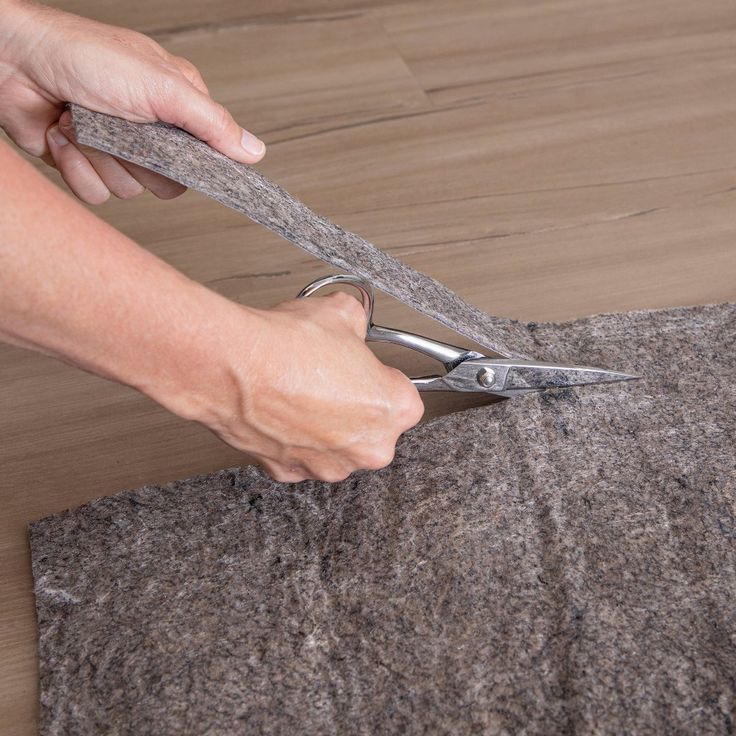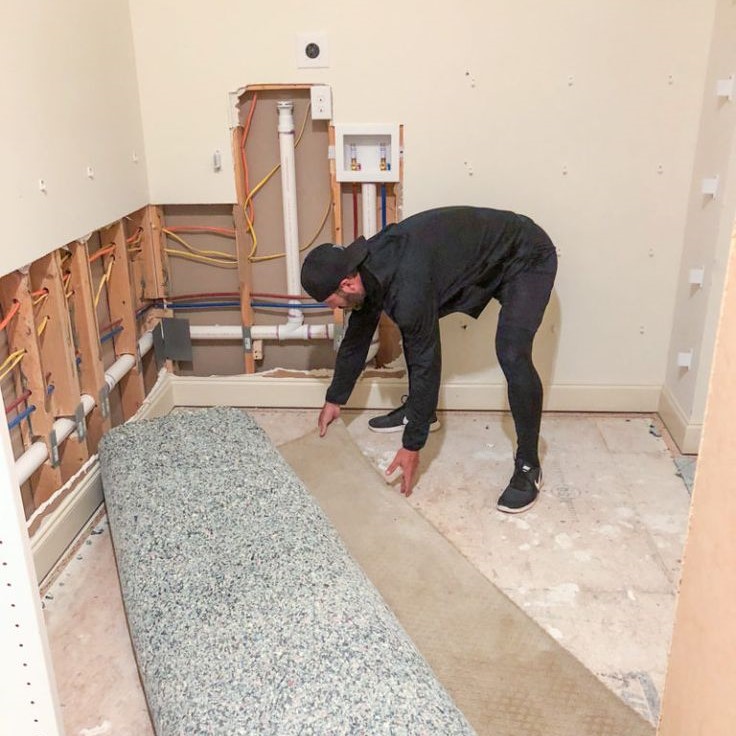Overview of Carpet Installation
Carpet installation transforms a room’s appeal, giving it a cozy and inviting atmosphere. Knowing how long to install carpet helps with planning and ensures a smooth transition. While carpet installation duration can range from a few hours to a full day, it’s a process that requires attention to detail.

Factors Impacting Installation Time
Several elements affect how long it takes to lay down new carpet. The shape of the rooms can extend the timeline, as irregular spaces demand more cutting and fitting. The condition of the subfloor matters too; a damaged subfloor could slow down the process. The removal of old flooring can add hours, especially for hard surfaces like tile or wood. Additionally, moving bulky furniture out and back into rooms tacks on extra time. The number of installers also plays a role; more hands can mean faster work. Lastly, the carpet type has an impact due to varying handling requirements for different material thickness and pile height.
Pre-Installation Preparation
Before starting the carpet installation process, adequate preparation is essential to ensure efficiency and limit potential obstacles. This preparation phase is crucial for a seamless installation journey.
Clearing and Cleaning the Area
The first step in pre-installation is to
clear the area where the carpet will be installed.
This includes moving furniture out of
the room and off the floor.
A clean workspace helps installers to move freely and safely. It’s also important
to vacuum or sweep the floor to remove debris that might affect carpet laying.
Assessing Subfloor Conditions
A thorough inspection of the subfloor
is necessary. It should be level, clean,
and free of damage. If repair is needed,
it must be done before the carpet goes down.
A good subfloor condition is critical for carpet longevity and appearance. Installers will check for squeaks,
uneven surfaces, and any moisture issues that may hinder installation. Addressing subfloor concerns earlier saves time and helps how long to install carpet stay within expected durations.
Determining the Installation Timeline
When planning carpet installation, it helps to have a clear timeline.
Typical Installation Durations
How long to install carpet varies. Generally, it takes a few hours to a full day. The time depends on several factors already discussed. For a standard room size, expect installation to take 1-2 hours, excluding prep work.
Variation Due to Room Size and Shapes
Install times can change with room size and shape. A small square room may take less time compared to a large, complex-shaped room. Rooms with stairs, nooks, or built-in features can add more hours to the job. Always allow extra time for these scenarios.
Professional vs. DIY Installation
When it comes to how long to install carpet, the choice between professional and DIY approaches matters. Both have their time implications and considerations.
Benefits of Professional Installation
Choosing professional carpet installation saves time and reduces hassle for homeowners. Here are some benefits:
- Expertise: Professionals have the skills to install quickly and efficiently.
- Tools: They come equipped with the right tools for the job.
- Quality: Proper installation ensures a better look and longer-lasting carpet.
- Guarantee: Many offer warranties on their work.
Professionals can tackle unexpected issues and often complete the job within a day.

Considerations for DIY Installation
DIY carpet installation can seem cost-effective, but it comes with challenges:
- Time: Without experience, the process can take much longer.
- Skill: Mistakes can be costly, impacting the final appearance.
- Tools: Proper tools are needed, which may require additional investment.
- Physical Effort: It’s labor-intensive, especially in rooms with complex shapes.
If time and quality are priorities, professional installation is often the wiser choice.
Tools and Materials Needed
Investing in the right tools and materials is crucial for efficient carpet installation. Having the necessary items on hand ensures a smoother workflow and reduces potential delays during the installation process.
Essential Tools for Carpet Installation
Several tools are indispensable when it comes to laying down carpet. These include a knee kicker and a carpet stretcher, which help ensure the carpet fits snugly against the walls. A carpet cutter is crucial for trimming excess carpet. You’ll also need a tape measure, chalk line, and seam tape. For securing the carpet, a hammer and tack strips are necessary. Additionally, a utility knife will help in making precise cuts, and a stair tool is needed for installing carpet on stairs.
Types of Carpets and Their Requirements
Carpets come in various types, each with specific installation needs. For example, plush carpets require precise stretching to avoid wrinkles. Berber carpets, known for their looped fibers, need careful handling to prevent snagging or damage. Frieze carpets, with their twisted fibers, are more forgiving and easier to install but still need proper anchoring. When selecting carpet, consider the material and pile height, as these factors will determine the tools and methods needed for installation.
Step-by-Step Installation Process
A good carpet installation follows a specific process. Here’s a step-by-step guide.
Floor Preparation
To begin, clear the room. Move furniture and vacuum the area. Make sure the subfloor is flat and clean. Any damage should be fixed. This ensures the carpet sits right and lasts long.
Carpet Laying and Fitting
Measure the room then cut the carpet to size. Lay padding, then the carpet, securing it along the edges. Use a stretcher to pull it tight. This avoids wrinkles or bumps. Trim excess carpet and clean up debris for a neat finish.
Post-Installation Tips
After the carpet is installed, there’s still work to do for the best outcome.
Final Touches and Cleaning
Once your carpet is in place, inspect it closely. Make sure there are no loose edges or wrinkles. If you spot any issues, call the installers immediately. It’s crucial to clean up now. Vacuum the carpet to remove small debris. This helps the carpet fibers stand straight and improves the overall look. Remove any tools or leftover materials from the room.

Maintaining Your New Carpet
To keep your carpet looking new, regular maintenance is key. Vacuum at least once a week. Attend to spills quickly to prevent stains. Every year, consider professional cleaning. This deep cleaning extends your carpet’s life. Avoid heavy furniture in one spot too long. Move it slightly every few months. This prevents deep imprints on your carpet. By following these simple steps, you’ll keep your carpet beautiful for years.
Common Challenges and Solutions
During the carpet installation process, you may encounter some common challenges. One of the most frequent issues is dealing with irregularly shaped rooms or awkward corners. To address this, carefully measure and cut the carpet to fit, using templates if necessary. Another challenge is working with thick or heavy carpets, which can be difficult to handle. Using a carpet stretcher and knee kicker can help manage these types of carpets. Uneven subfloors can also pose a problem, as they can cause the carpet to buckle or develop wrinkles. Ensure the subfloor is level and smooth before laying the carpet. Lastly, if you find that the carpet is not lying flat, re-stretch it using a carpet stretcher and secure it with tack strips. Addressing these challenges promptly will help ensure a successful and timely installation.
Conclusion
Understanding how long it takes to install carpet is essential for planning your project. Whether you are a DIY enthusiast or hiring professionals, the installation time can vary based on several factors, including the size of the room, the type of carpet, and the condition of the subfloor. By following the steps and tips outlined in this guide, you can ensure a smooth and efficient installation. Remember to plan ahead, work systematically, and use the right tools. With the right preparation and approach, you can enjoy a beautifully installed carpet in no time.



